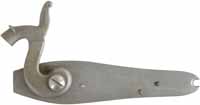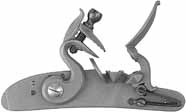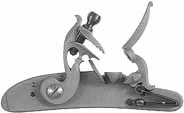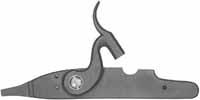Your search for '通风大圣'
returned
5,671 results.

|
Lock, Back Action left hand, percussion, by L&R
Called “back action” because the mainspring hangs behind the tumbler, this lock was popular on percussion guns made in St. Louis, New York, California, Ohio, England and Belgium. Swivel breech double rifles require a back action lock mechanism. This lock can be modified for flint use. Side-by-side or over-and-under double rifles, shotguns, and comb
|

|
Late English Flint Lock , right hand, with gooseneck cock, made in the USA, by L&R
Late English right Flint Lock L&R's Late English Flint Lock is sometimes called a “Hawken" flint lock. Use it on American longrifles of the 1800 to 1830 era, fullstock Plains rifles, Hawken rifles, Tennessee rifles, English fowling guns and London style flint fullstock and half-stock sporting rifles. This nice right flint lock is made to fit our
|

|
Late English Flint Lock , right hand, with re-inforced cock, made in the USA, by L&R
Late English right Flint Lock L&R’s late flint lock is sometimes called a “Hawken” flint lock. Use it on American longrifles of the 1800 to 1830 era, fullstock Plains rifles, Hawken rifles, Tennessee rifles, English fowling guns and London style flint fullstock and half-stock sporting rifles. This nice right flint lock is made to fit our right h
|

|
Bedford County right hand, flint lock, by L&R
Studying the longrifles of Bedford County, Pennsylvania, might cause you to imagine that time nearly stopped in Bedford County, or that this region was isolated from the world. How can we explain why these men continued to make Bedford County rifles for over 120 years, much later than we might expect? How can we explain these very odd locks, with l
|

|
Bedford County right hand, percussion lock, by L&R
Studying the longrifles of Bedford County, Pennsylvania, might cause you to imagine that time nearly stopped in Bedford County, or that this region was isolated from the world. How can we explain why these men continued to make Bedford County rifles for over 120 years, much later than we might expect? How can we explain these very odd locks, with l
|